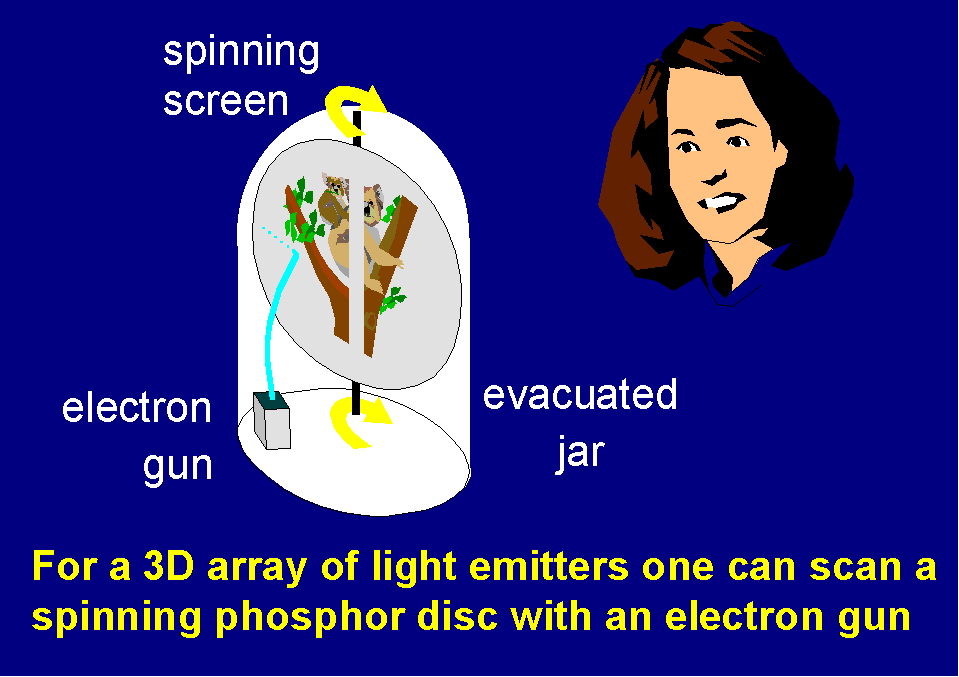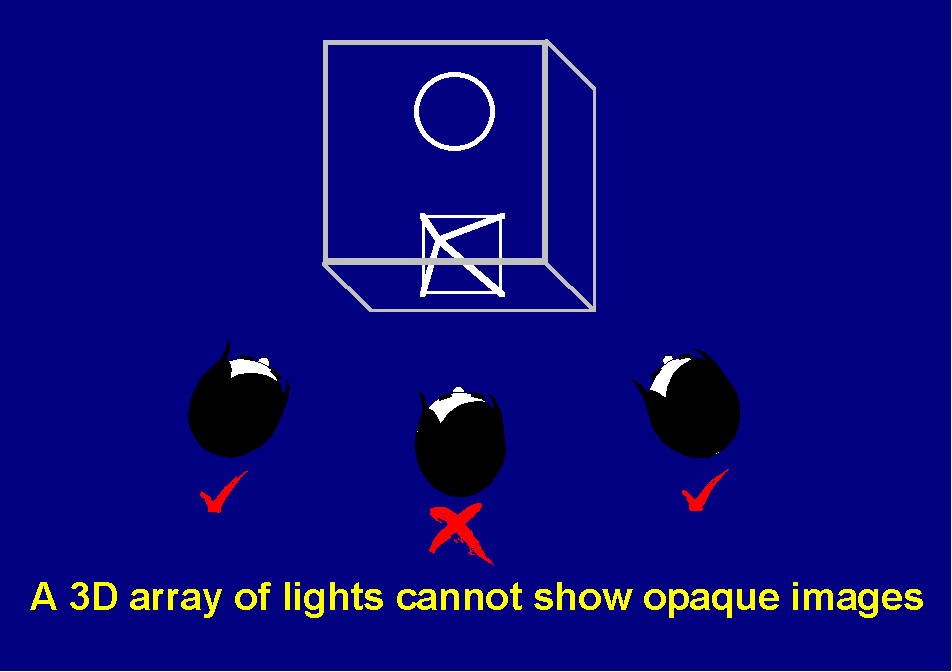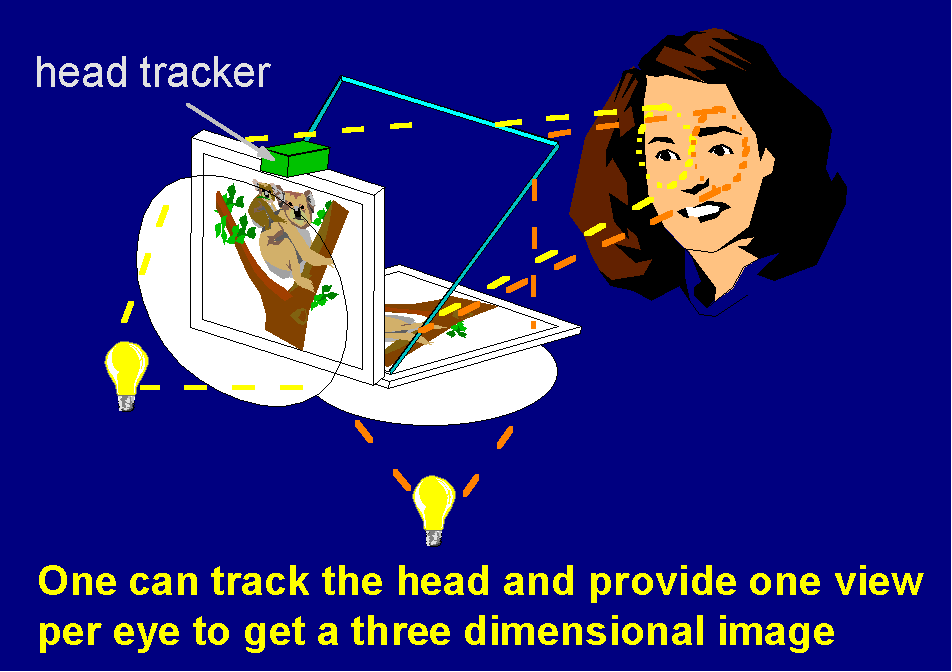| © CMG Lee • Dec2003 | |||||||||||||||||||||||||||||||||||||||||||
| Home | Basic 3D | Projection | Holographic | Optical addressing | Flat panel | Survey | Accommodation | Autostereo | Perspective | Principles | Simulation | Cam Display | References | ||||||||||||||||||||||||||||||
|---|---|---|---|---|---|---|---|---|---|---|---|---|---|---|---|---|---|---|---|---|---|---|---|---|---|---|---|---|---|---|---|---|---|---|---|---|---|---|---|---|---|---|---|
Volumetric 3D displays
| Perhaps the most intuitive way of displaying a real three dimensional image is to create a pixellated three dimensional array of light emitters. Barry Blundell while at Canterbury University did this by spinning a flat phosphor disc in a vacuum and raster scanning it with a cathode ray tube. You can also spin an array of light emitting diodes, or a white disc and scan it with lasers but all these ideas have a singularity at the axis. |  |
 |
The US Office of Naval Research and Stanford University have got rid
of the singularity by scanning a cube with a pair of lasers. The cube is
small (the size of a sugar lump) and made of material which emits light
at the point where the lasers intersect, so one can draw a 3D image.
The trouble with all displays of this kind is that while provision is given to emit light at any point, none is given to block it. So there is no way to screen opaque images, and opacity is a major depth cue. |
Holographic video displays
A hologram "freezes" the light waves reflected by a solid object, and since it is these waves which constitute the 3D image, a hologram can be used to make a perfect 3D display. Stephen Benton et al. at MIT have used acoustic waves to create a moving hologram in acousto-optic material. But they need several small devices and a spinning mirror to get a large image, because large acousto-optic devices are impractical. DERA Malvern are creating moving holograms using optically addressed spatial light modulators in collaboration with us at Cambridge. You can also create a holographic video display from a very high resolution liquid crystal display, but with a million pixels per square millimetre the data rates are horrific.
Autostereoscopic displays
The remaining approach is to make a display on which you get a picture that depends on from where you look at the screen. The simplest uses an array of lenslets with several sub-pixels in the focal plane of each lenslet (like one gets in cereal packets). Philips and Sanyo are pursuing this, but the resolution of the display has to be very high. You can use mini-holograms instead of lenslets but the problem is the same. A similar approach is to point several video projectors at a lens: the lens makes the image from each projector visible to a different point of view, and Richard Borner et al. in Berlin have got good results, but they have to align the projectors very carefully.
| Sharp Laboratories of Europe, NHK, Xenotech of Australia, Tsukuba University and others advocate projecting only two views (one for each eye) but continually monitoring the position of the viewer’s head and adjusting the display so that the views stay visible to either eye. Of course it’s difficult tracking viewers’ heads in a cluttered environment, but tracking one head seems possible. |  |
| Copyright CMG Lee & ARL Travis, Photonics and Sensors Group, Cambridge University Engineering Department |